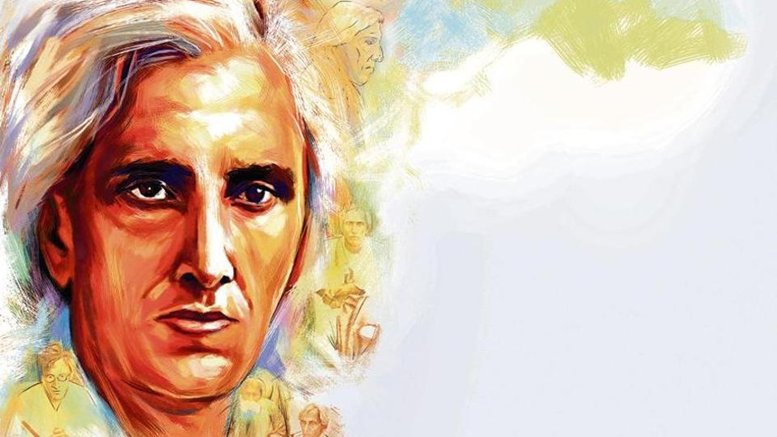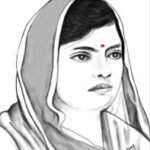Sarat Chandra Chatterji: The Master of Human Emotions and Indian Literature
Sarat Chandra Chatterji (1876-1938) was one of the most significant and beloved writers in Bengali literature, and his works continue to resonate with readers around the world. Renowned for his ability to capture the intricacies of human emotions, especially the struggles of the common man, Chatterji’s novels, short stories, and plays explored social issues, gender inequalities, and the moral dilemmas faced by individuals in society. His literature gave voice to the suppressed and marginalized, making him a prominent figure in the cultural and social awakening of Bengal and India at large.
Early Life and History of Sarat Chandra Chatterji
Sarat Chandra Chatterji was born on September 15, 1876, in Deblali, a village near Burdwan in West Bengal, India. He hailed from a modest background, with his father being a government official. Raised in a time when Indian society was deeply entrenched in traditional beliefs and customs, Sarat Chandra was exposed to both the beauty and the contradictions of the world around him. His early life experiences would shape much of the compassionate and progressive themes in his writing.
Chatterji faced financial hardships early in life, especially after the death of his father. However, despite these struggles, he pursued his education, first at the local school and later at the Benares Sanskrit College. His education laid the foundation for his literary career. Although he briefly worked in government offices to support himself, it was his love for writing that eventually became his life’s calling.
Sarat Chandra’s first novel, “Srikanta,” written in 1917, marked the beginning of his literary journey. Over the next two decades, he authored more than 30 novels and 200 short stories, along with numerous plays. His works, such as “Devdas,” “Palli Samaj,” “Chhawa,” and “Bindur Chhele,” captured the emotional depth of relationships, the societal constraints of the time, and the human longing for dignity, love, and respect.
Daily Life Impacts of Sarat Chandra Chatterji’s Work
Sarat Chandra Chatterji’s writings had a profound impact on the daily lives of people, particularly in Bengal and other parts of India. His works were instrumental in shaping the way people thought about issues such as caste, class, gender, and the roles of women in society. By focusing on ordinary people in his stories, Chatterji highlighted the struggles faced by those who were often overlooked and oppressed.
One of the most enduring impacts of his writing was on the perception of women in society. In “Devdas,” Chatterji created the tragic tale of Paro, a woman trapped in a rigid society that placed immense pressure on her to conform to its norms. Similarly, in “Palli Samaj,” he addressed the issues of rural life and the limitations of the traditional village system. His stories often illustrated the painful consequences of social injustice and the lack of opportunity for the marginalized.
Moreover, Chatterji’s exploration of the emotional depth of human relationships helped readers connect with the characters in his stories on a personal level. His writing inspired empathy, challenged societal norms, and prompted introspection on the part of readers. His works created awareness about the need for reform, especially with regard to the status of women, the caste system, and the unequal treatment of the poor.
Significance and Observance of Sarat Chandra Chatterji’s Legacy
Sarat Chandra Chatterji’s legacy is celebrated in literary circles and among the general public for its deeply humane qualities. His works continue to be adapted into films, television shows, and stage productions, attesting to the timelessness of his themes and characters. He is often cited as a master storyteller, whose works hold a mirror to society and expose its flaws with compassion and honesty.
In India, Sarat Chandra’s birth anniversary on September 15 is observed through literary discussions, poetry readings, and cultural programs. His influence on Bengali literature, in particular, remains unparalleled, and his works continue to be part of the curriculum in schools and colleges.
Chatterji’s life and works were also significant in the context of the Indian independence movement. Though not directly involved in politics, his stories often highlighted the social inequalities that were an inherent part of British colonial rule. His writings encouraged a sense of social consciousness that was in line with the reform movements of the time.
Key Facts About Sarat Chandra Chatterji
- Prolific Writer:
Sarat Chandra Chatterji wrote more than 30 novels and 200 short stories, and his work continues to be celebrated for its deep emotional resonance and social relevance. - Themes of Social Reform:
His stories often dealt with the plight of women, the caste system, and the struggles of the poor, challenging the traditional norms of society. - Famous Works:
Some of his most famous works include “Devdas,” “Palli Samaj,” “Bindur Chhele,” and “Chhawa.” These works remain iconic in Bengali literature and have been adapted into numerous films and plays. - Impact on Bengali Literature:
Chatterji is regarded as one of the most significant writers in Bengali literature. His contribution to modern Indian literature is immeasurable, and his works have influenced generations of writers. - Humanitarian Spirit:
Throughout his writing, Sarat Chandra remained dedicated to portraying the lives of the common man, particularly those who were marginalized by society. His compassion for his characters was a hallmark of his work.
FAQs About Sarat Chandra Chatterji
Q: What is Sarat Chandra Chatterji’s most famous work?
A: Sarat Chandra Chatterji’s most famous work is “Devdas,” a tragic tale of love and societal constraints that has been adapted into multiple films and plays.
Q: What social issues did Sarat Chandra address in his writings?
A: Chatterji addressed issues such as caste discrimination, the plight of women, the struggles of the poor, and the limitations imposed by social traditions.
Q: How did Sarat Chandra Chatterji contribute to the Indian independence movement?
A: Although not directly involved in politics, Chatterji’s writings exposed the social inequalities that were exacerbated by British rule, and his works contributed to the social reform movement of the time.
Q: What themes are prevalent in Sarat Chandra Chatterji’s works?
A: Themes of love, sacrifice, social justice, the challenges faced by women, and the emotional complexities of human relationships are central to his works.
Why Sarat Chandra Chatterji is Important to Society
Sarat Chandra Chatterji is important to society because his works were deeply embedded in the struggles of the common man and the social issues of his time. He gave voice to the oppressed and challenged societal norms, making his work both socially relevant and emotionally impactful.
His portrayal of women, especially, played a crucial role in changing how women were perceived in society. Chatterji’s stories highlighted the need for gender equality, education, and the right of women to make their own choices. His works continue to inspire readers and writers to engage with the world’s social injustices and strive for a more equitable society.
In conclusion, Sarat Chandra Chatterji’s contributions to literature and society were profound. His works have left an everlasting legacy that continues to influence readers, filmmakers, and social reformers. His compassionate approach to storytelling and his commitment to highlighting the injustices of society make him a revered figure in the history of Indian literature.










